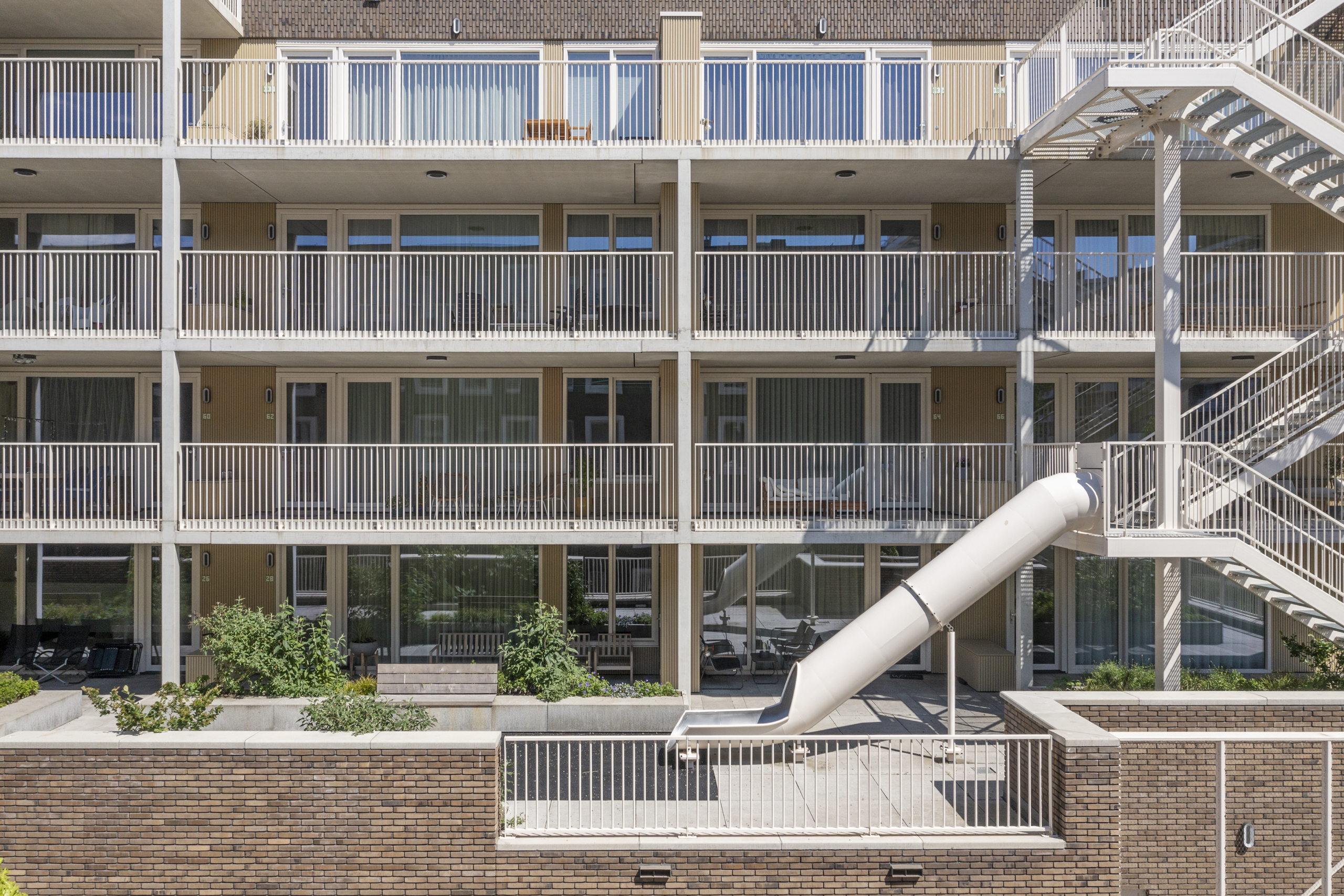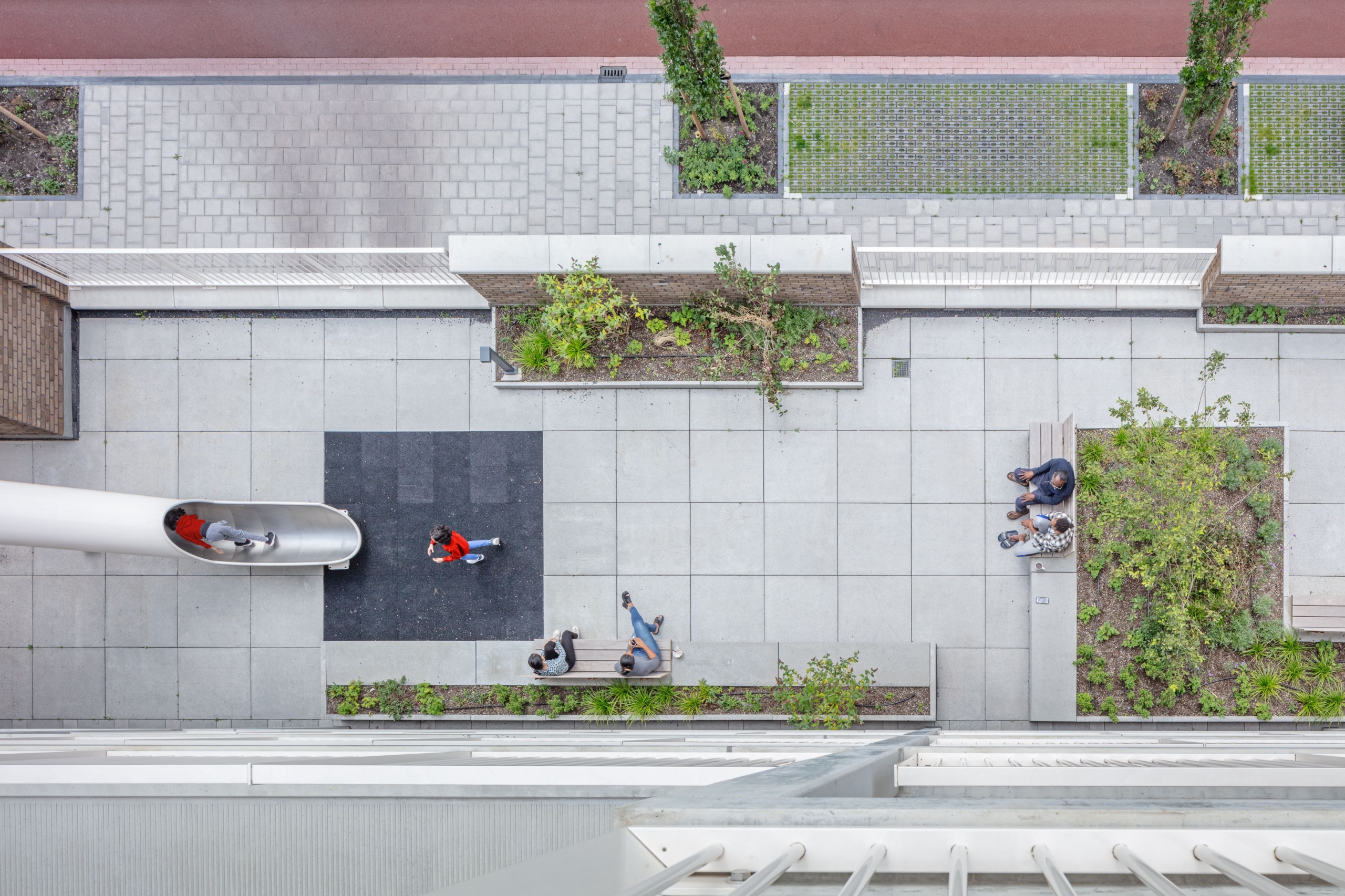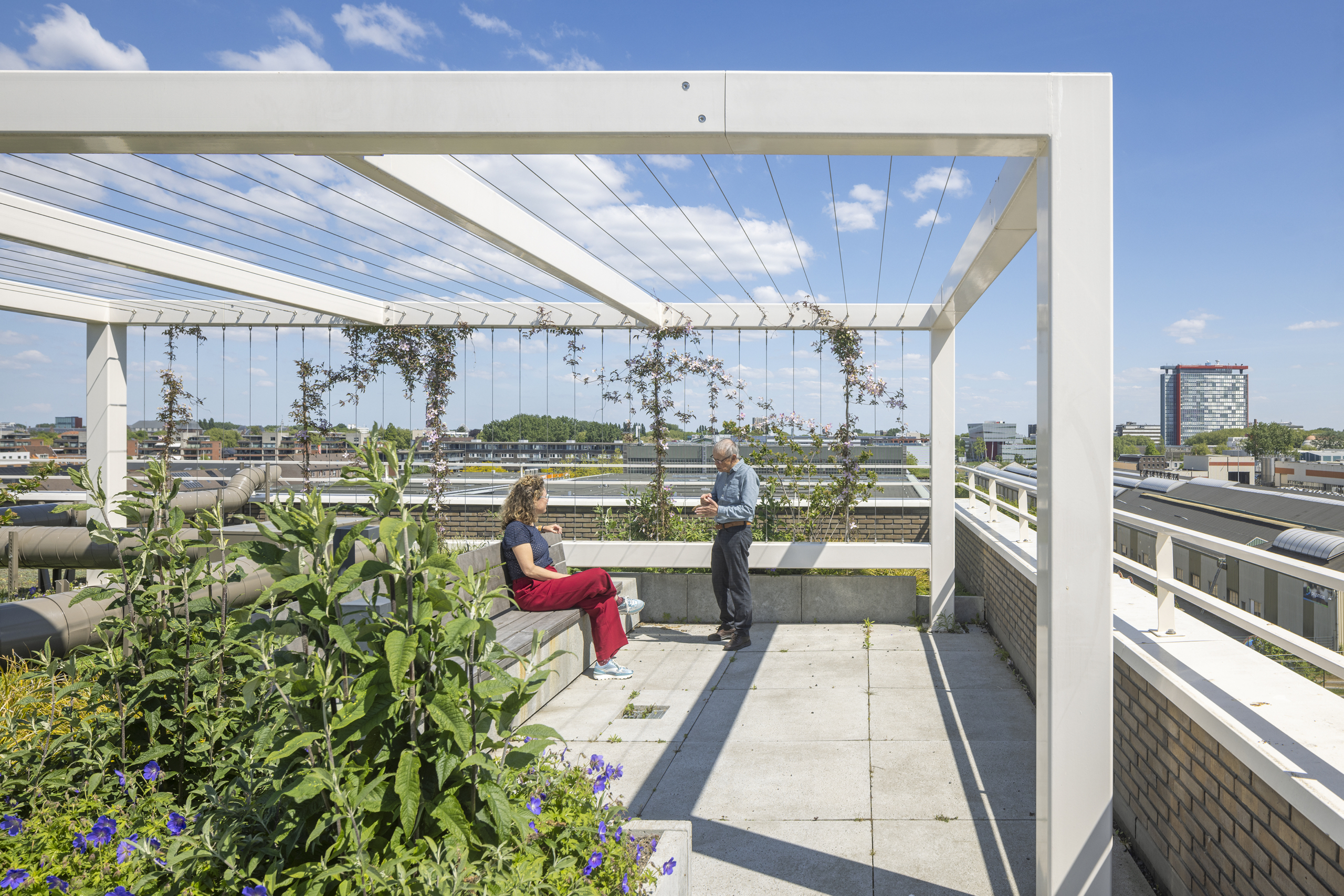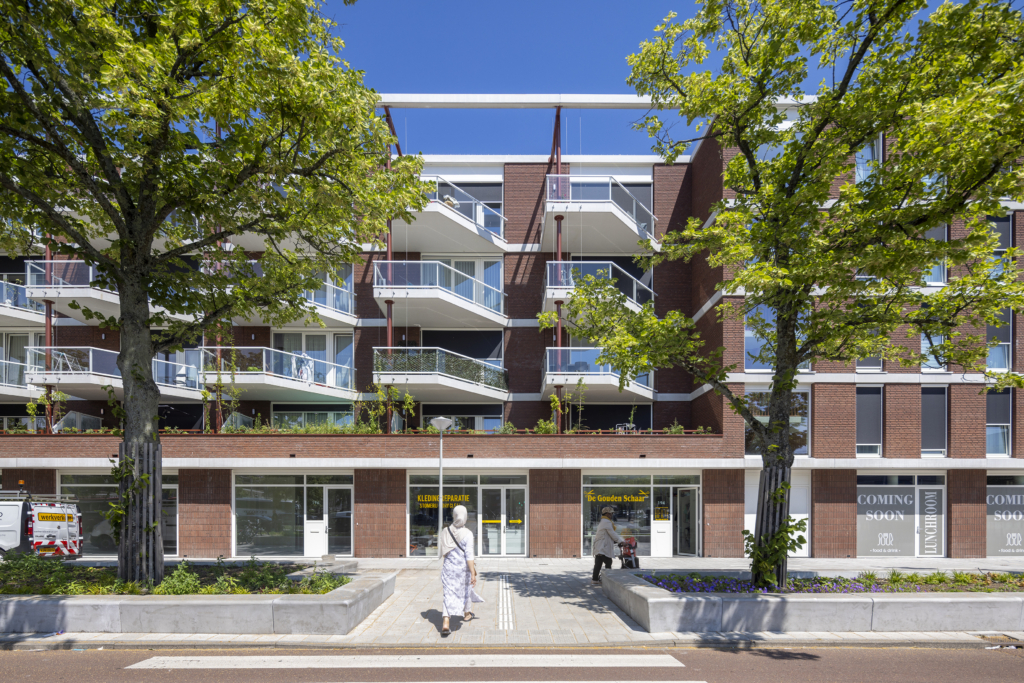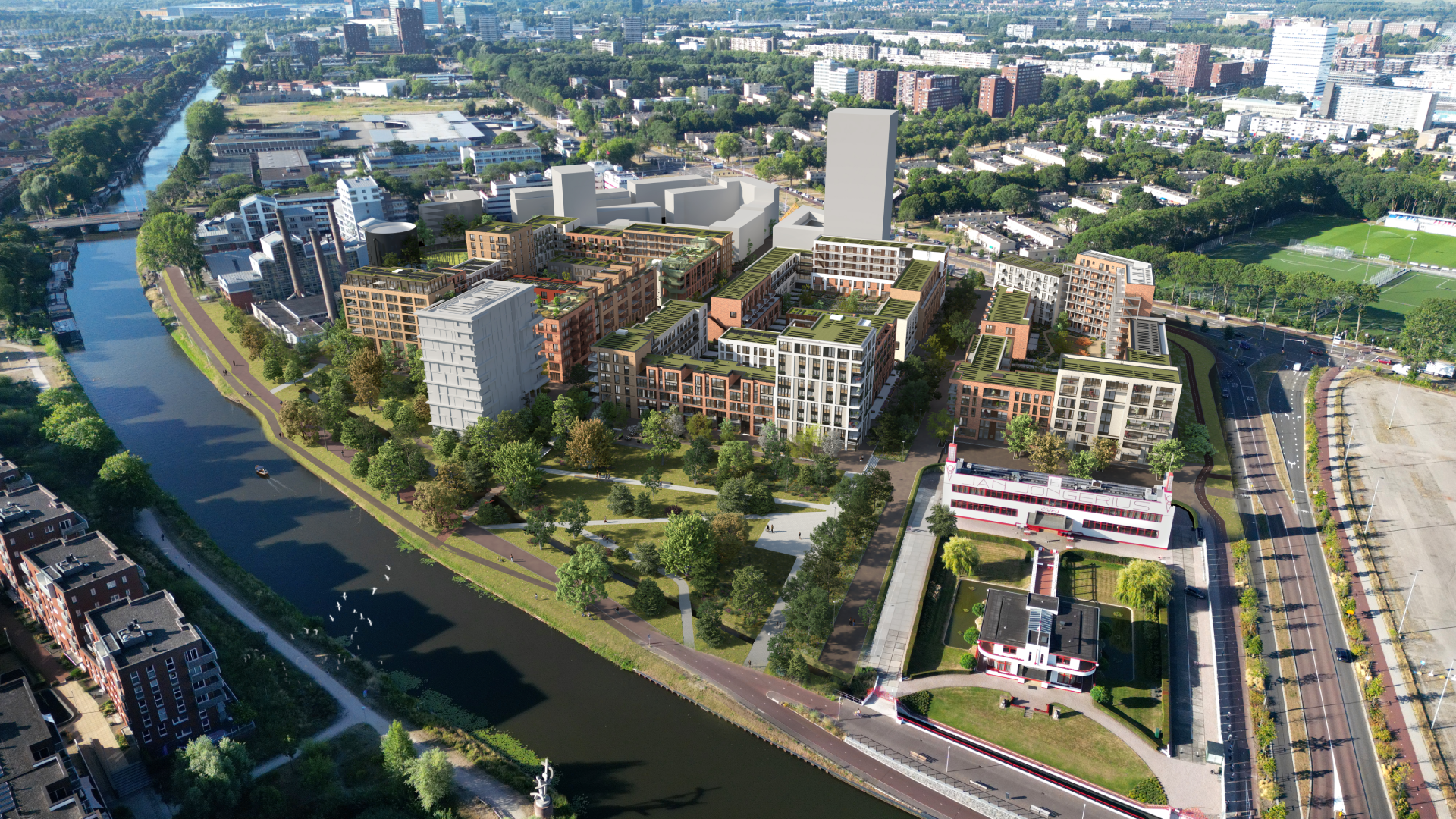Families stay in the city
The Family offers the space and security that households with children desire in an urban environment. A residential complex with 94 affordable family apartments within walking distance of the centre of Delft. The design responds to different housing needs per type of family. Residents use facilities such as the slide to the play deck, the roof garden, a communal living room and a bicycle shed.
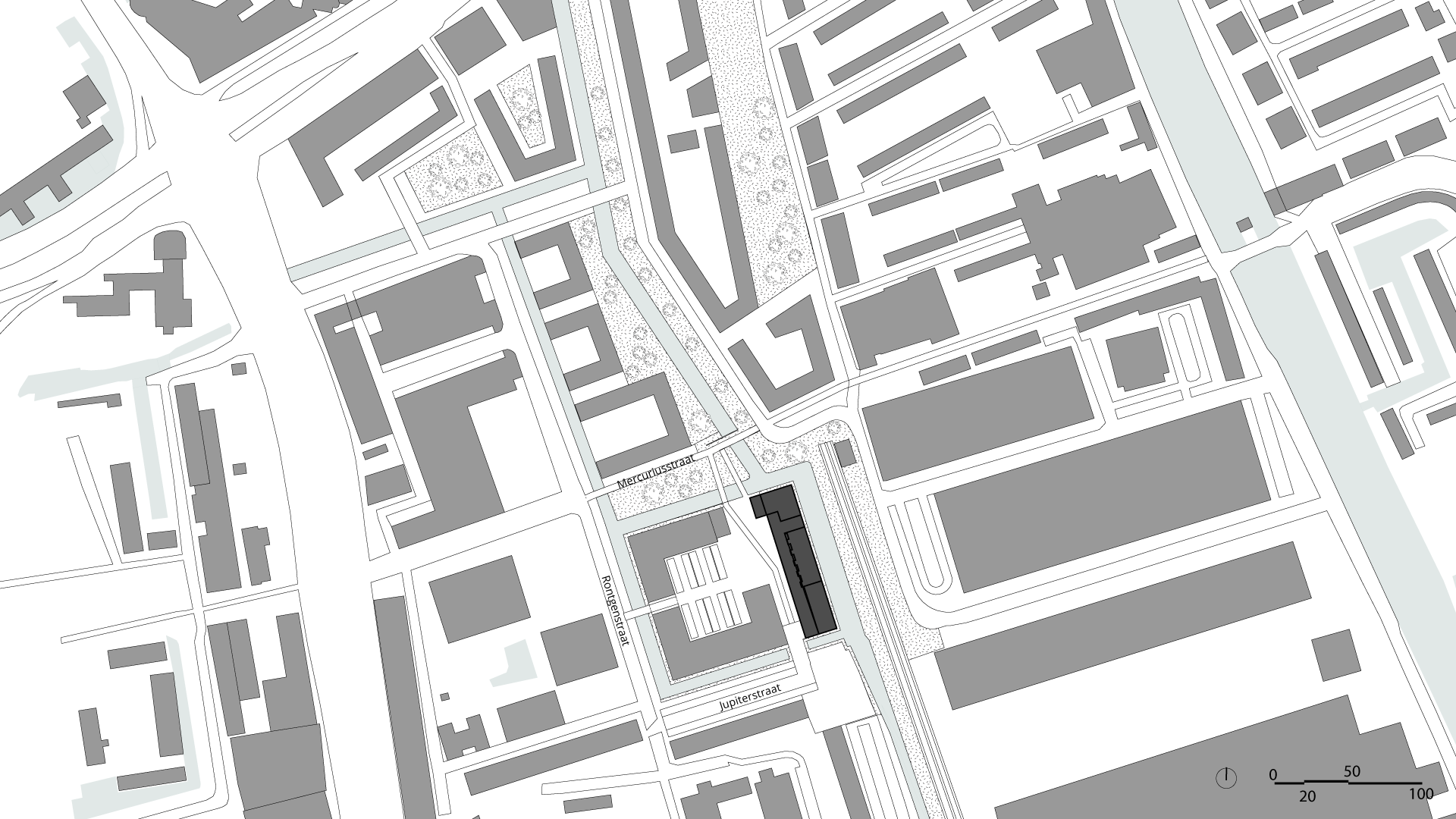
Project
The Family
Client
BPD
Location
Delft
Program
Residential building with 94 apartments for families
Period
2017-2023
Status
Built
Photography
Luuk Kramer, Laurens Kuipers (communal spaces)
Project:
Location:
Client:
Program:
Period:
Status:
Photography:
The Family
Delft
BPD
Residential building with 94 apartments for families
2017-2023
Built
Luuk Kramer, Laurens Kuipers (communal spaces)

Railway zone Delft
The location on the Delft railway zone connects to the water of the Nieuwe Gracht. On the north side there is a cycle route that connects the TU district with the Voorhof. The Family responds to the context by being the final piece of the Nieuwe Gracht and the formal outer shell matches the architecture of the adjacent X-ray building. The building thus forms a coherent ensemble with its context.
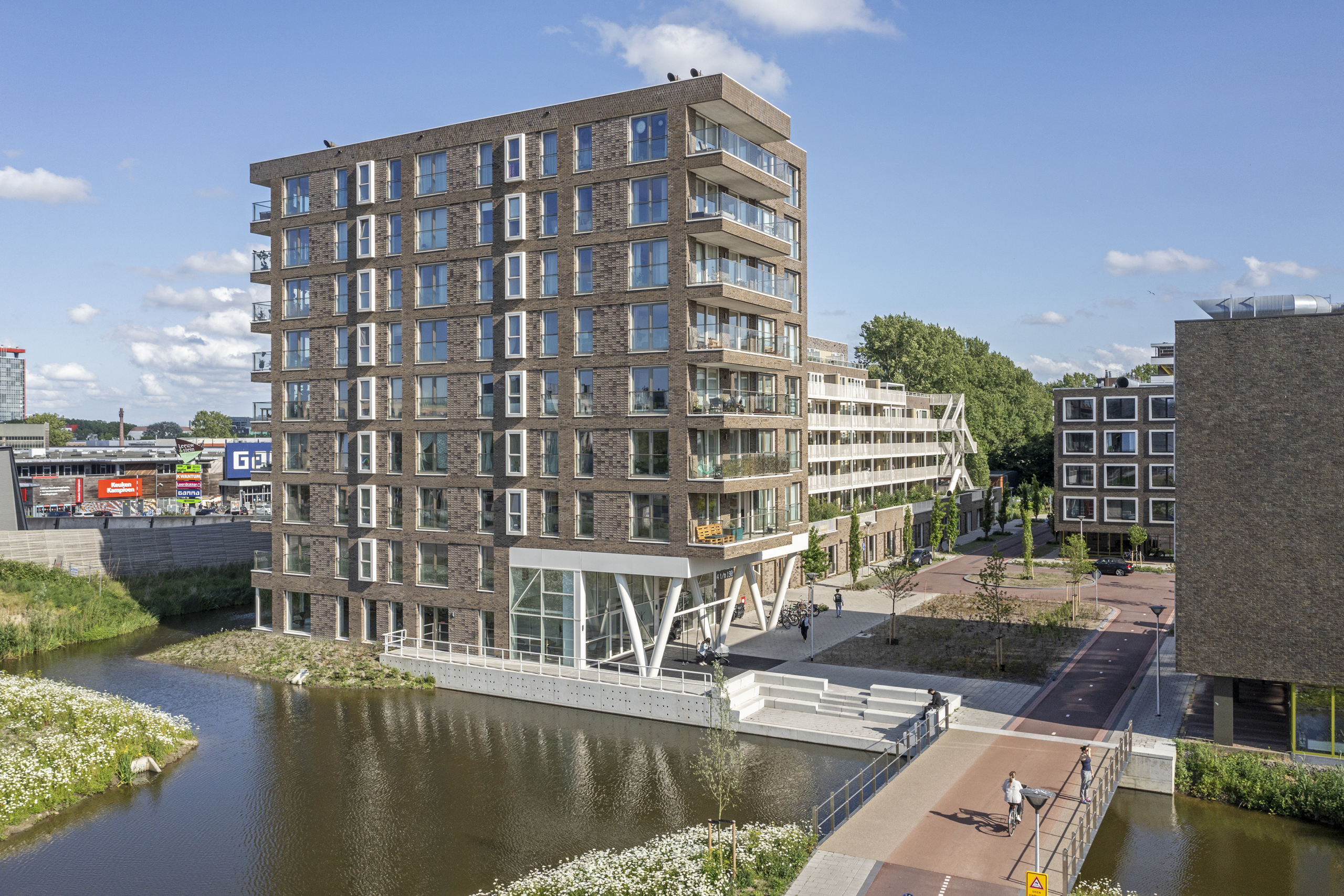

Recognizable living environments
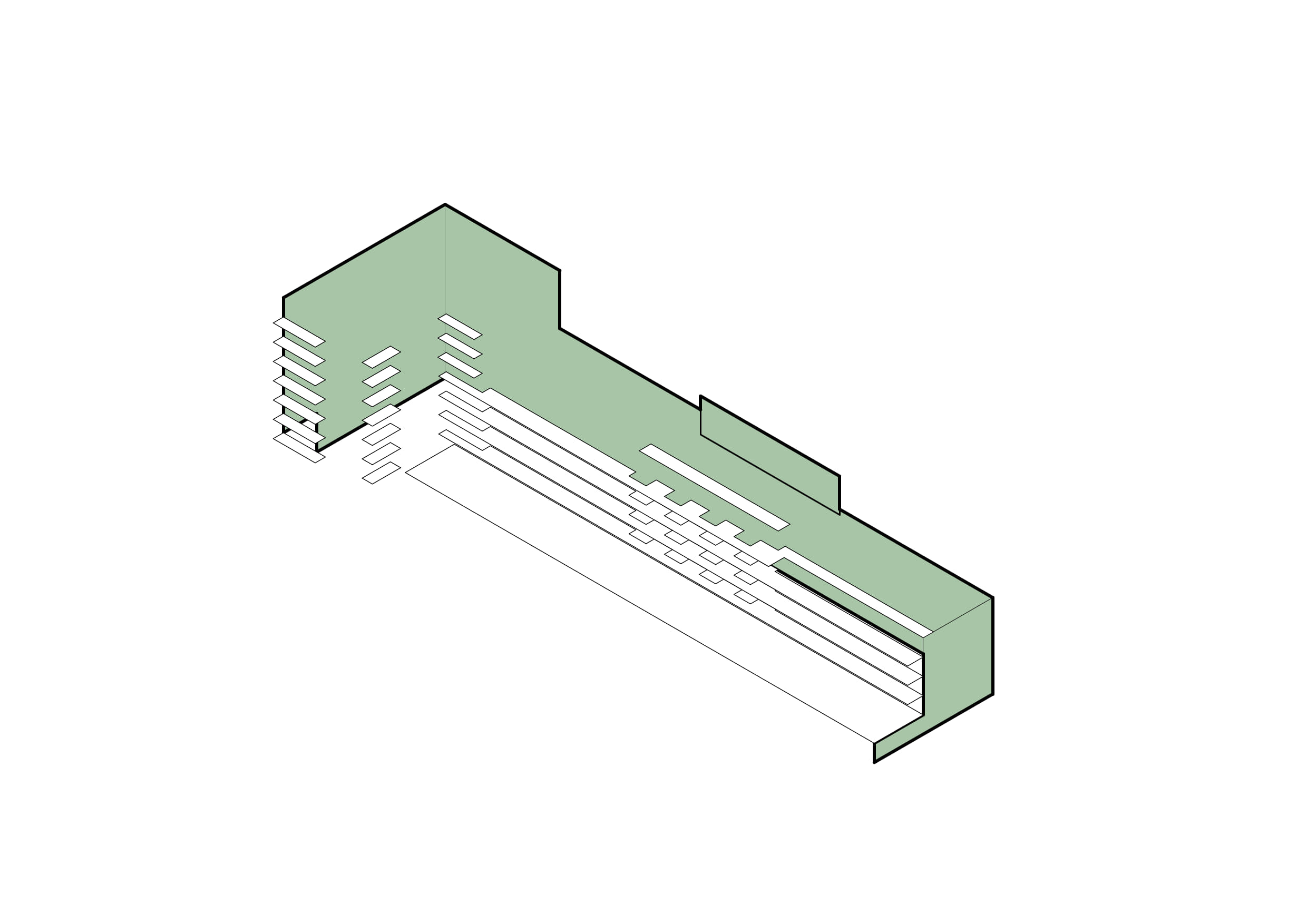
Formal and informal
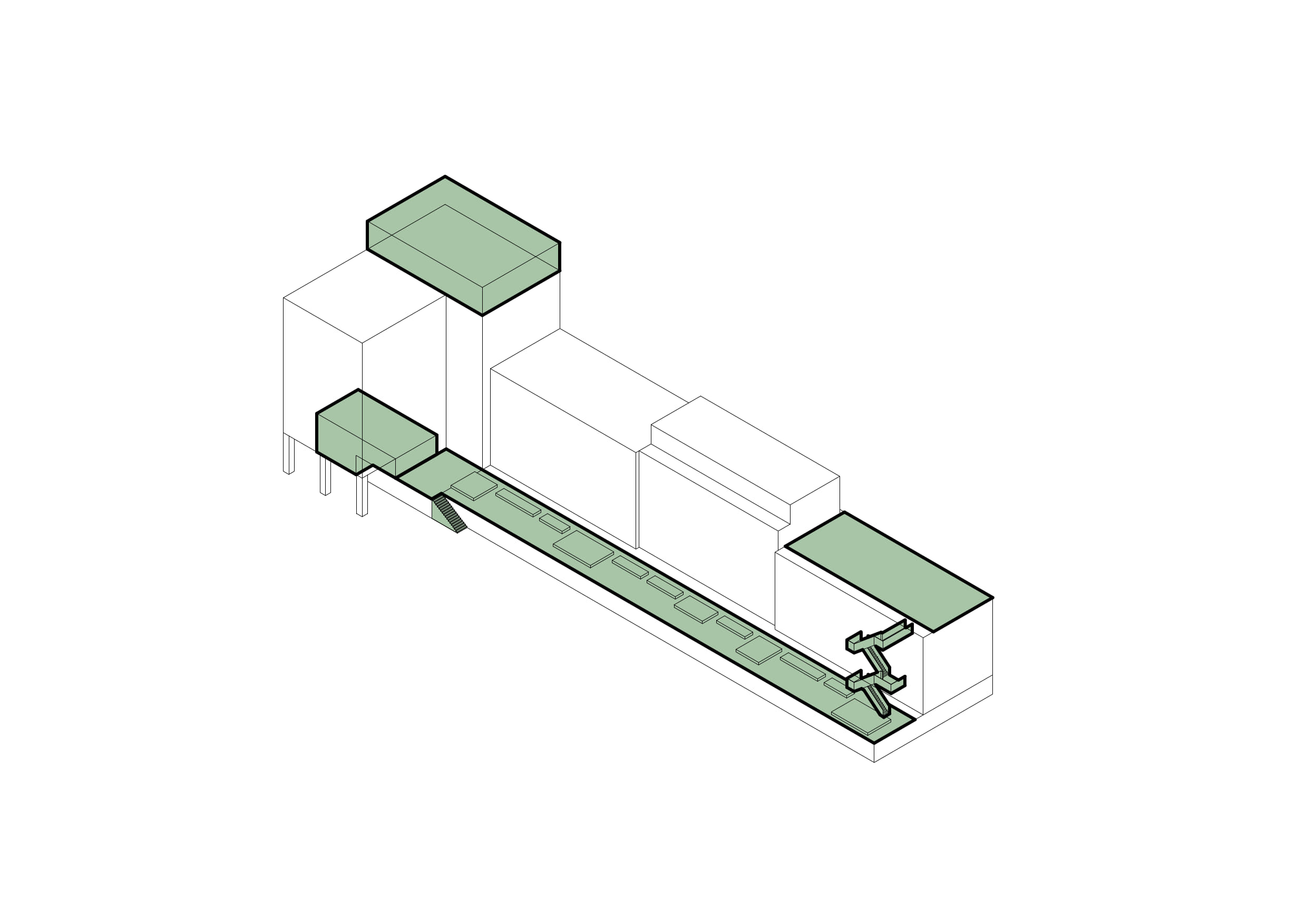
Collective domain

Variation in housing types
Residential building for city families
A residential building for urban families requires, on the one hand, sufficient (collective) facilities, and, on the other hand, a diverse range of housing typologies that are suitable for families in all phases. By including collective spaces in the design, more space is created in the compact city homes. The different housing types are connected to the collective living spaces in and around the building. There are homes in different sizes, for starting families, regular families, single-parent families and large blended families and they are carefully tailored to the different housing needs.

1st floor, play deck and living gallery
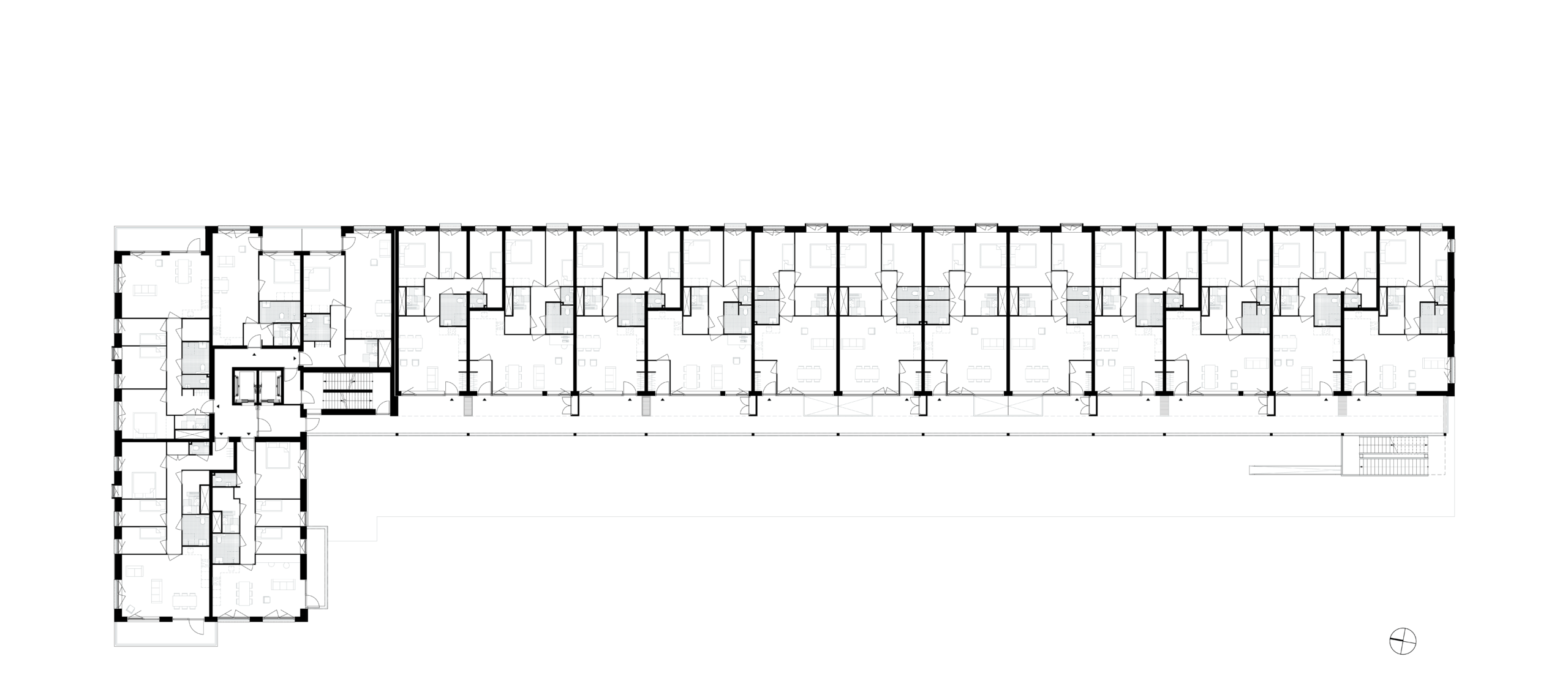
2nd floor, living gallery
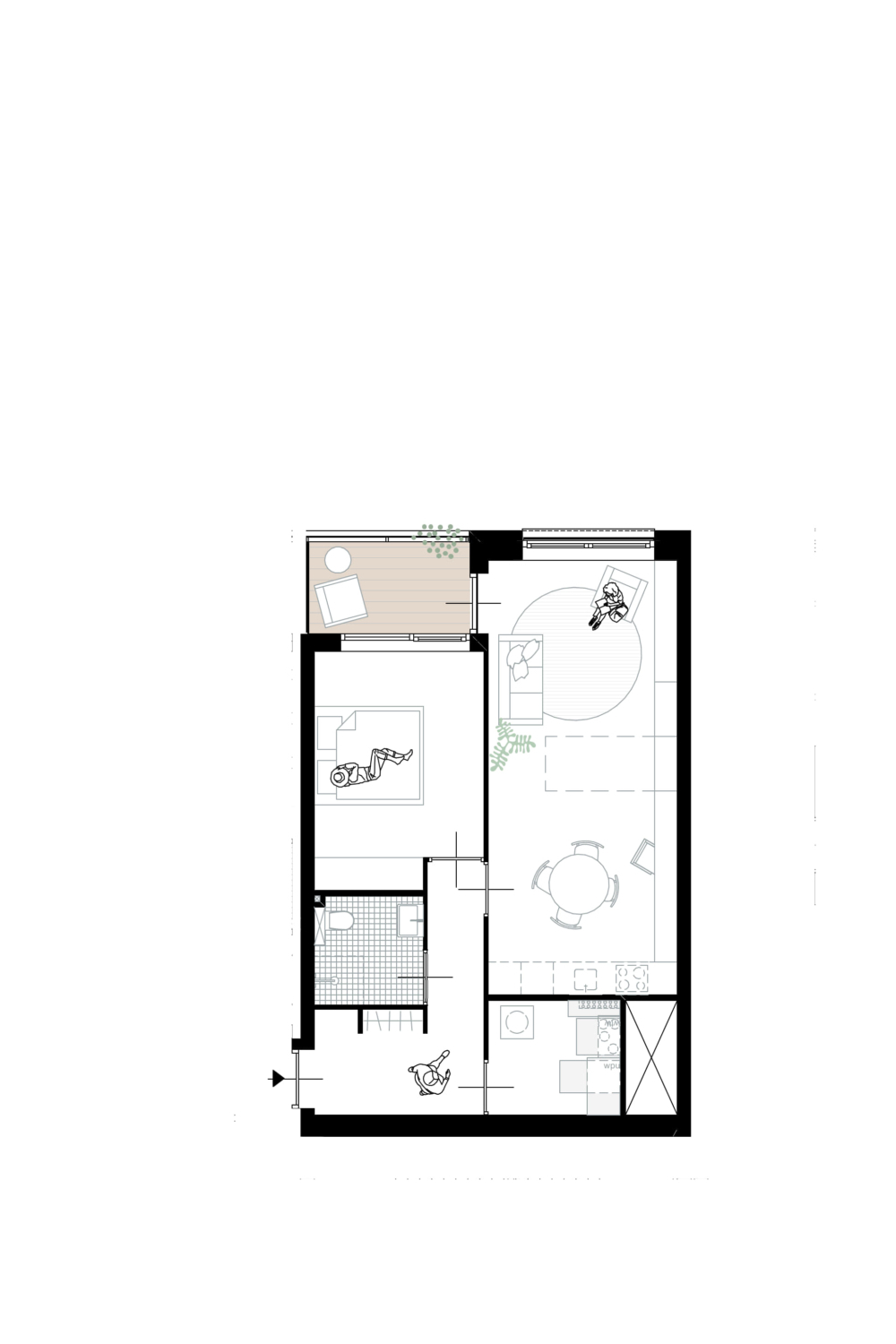
Part-time family 55 m2
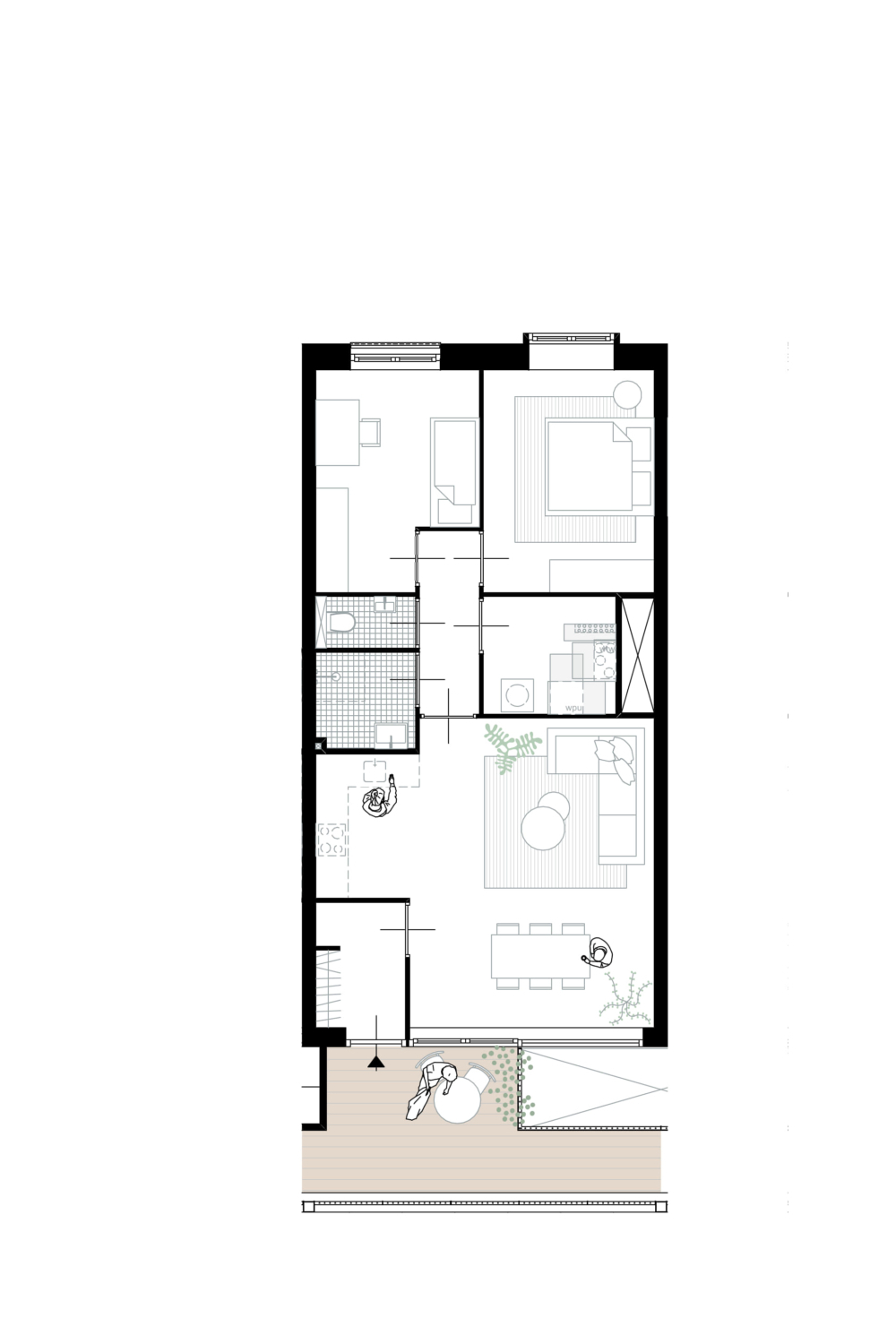
Young family 75 m2
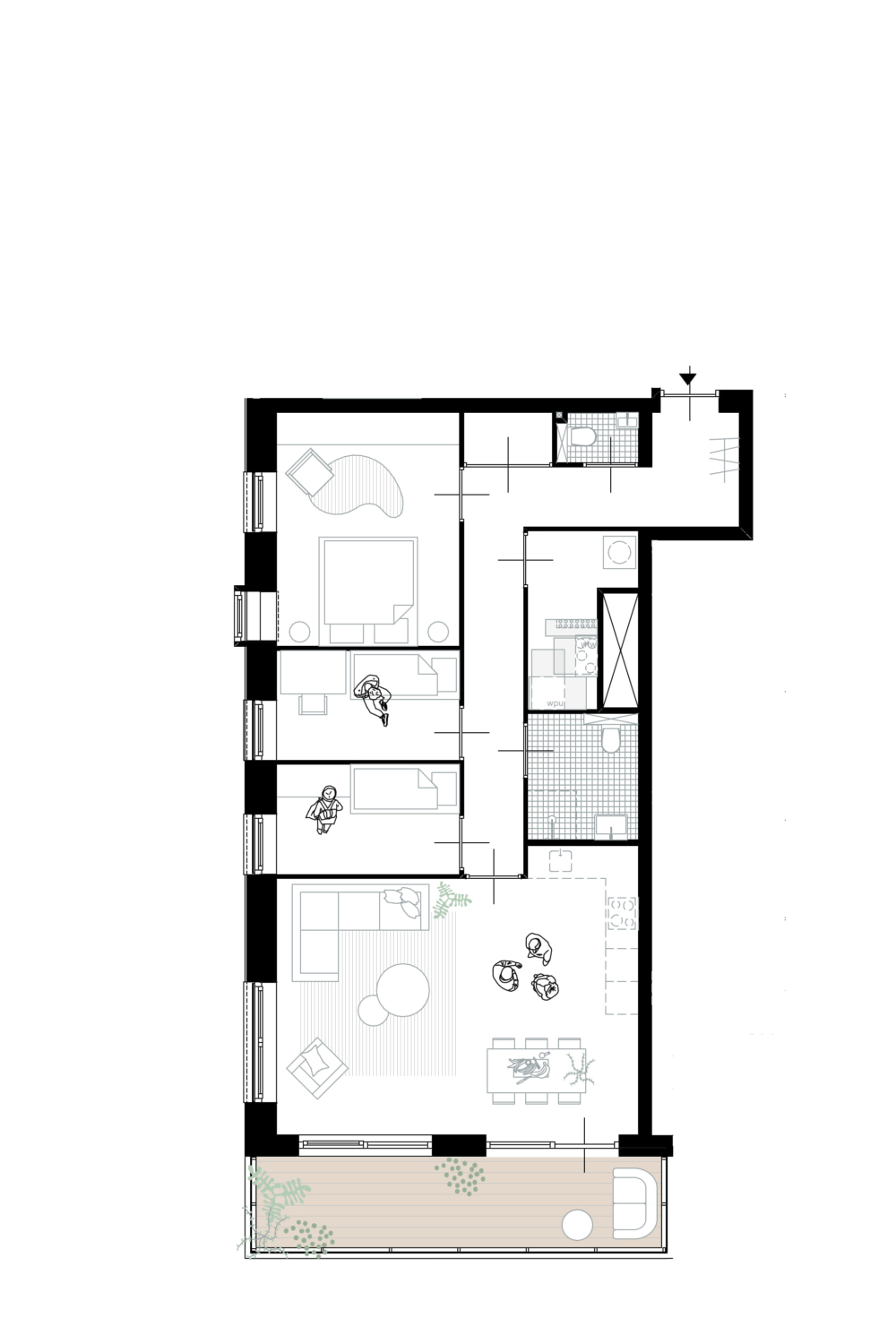
Teenage family 88 m2
Child’s range of action
The building takes into account the growing child and how it can increasingly increase its range of action. By creating many different play areas for children that are connected to each other and to the home and the environment, children of different ages can all play outside. Small children within sight of the home and slightly older children, less directly visible, in the building. The older children take the step outside the building. These transitions are designed very gradually.
Play deck and living gallery
Play and discover within sight of the parents

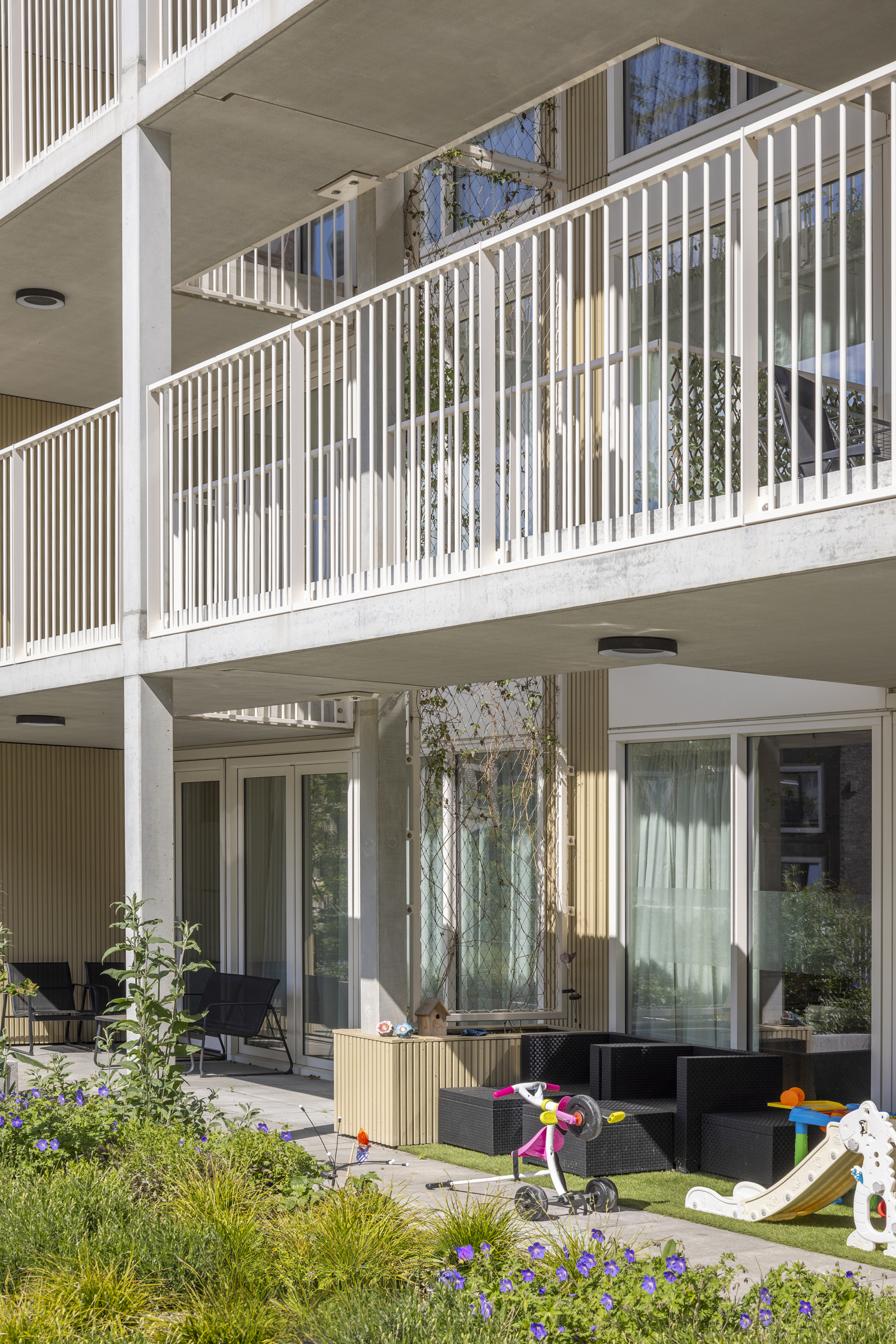
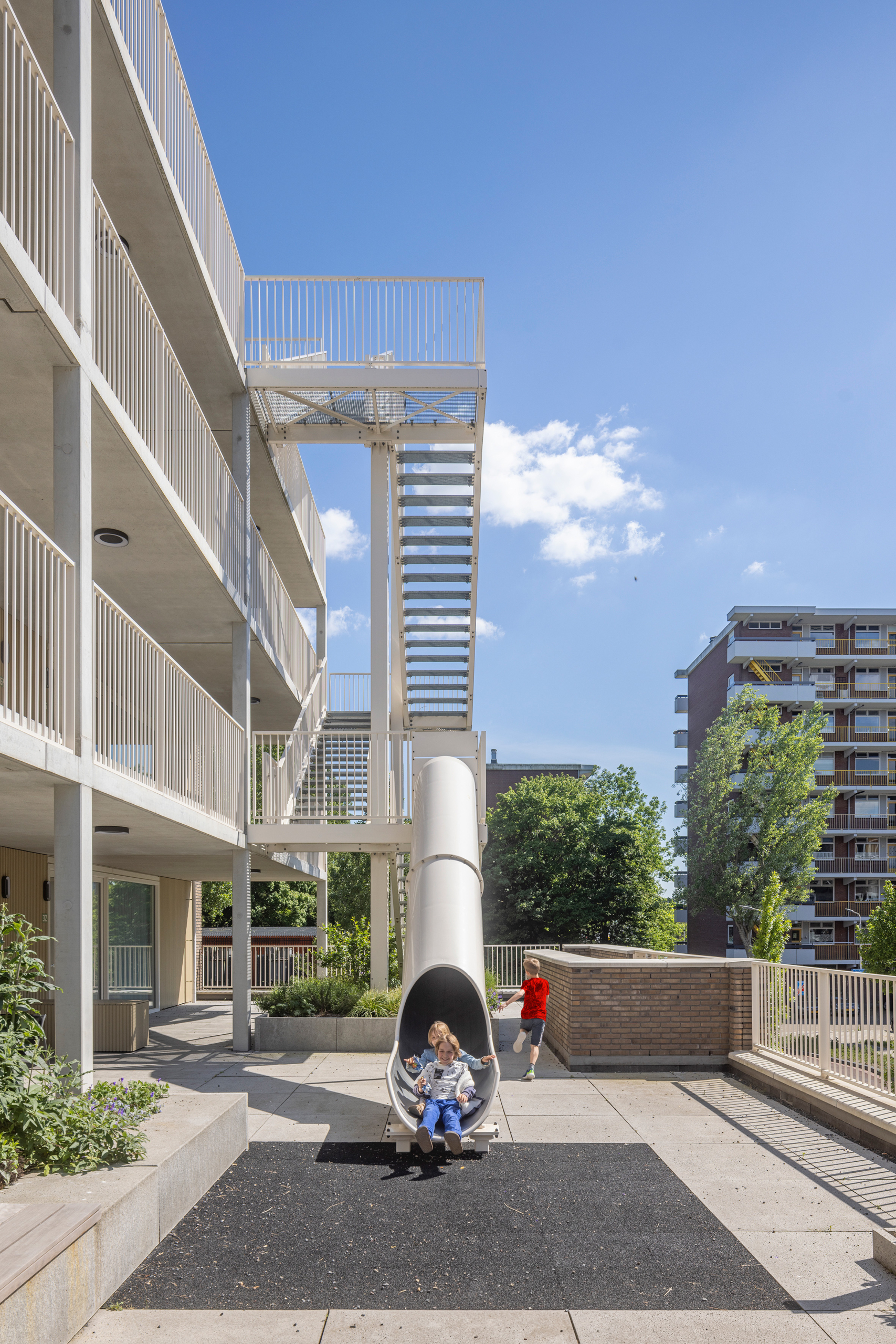
Roof garden and living gallery
Places to isolate yourself with your neighbor friends
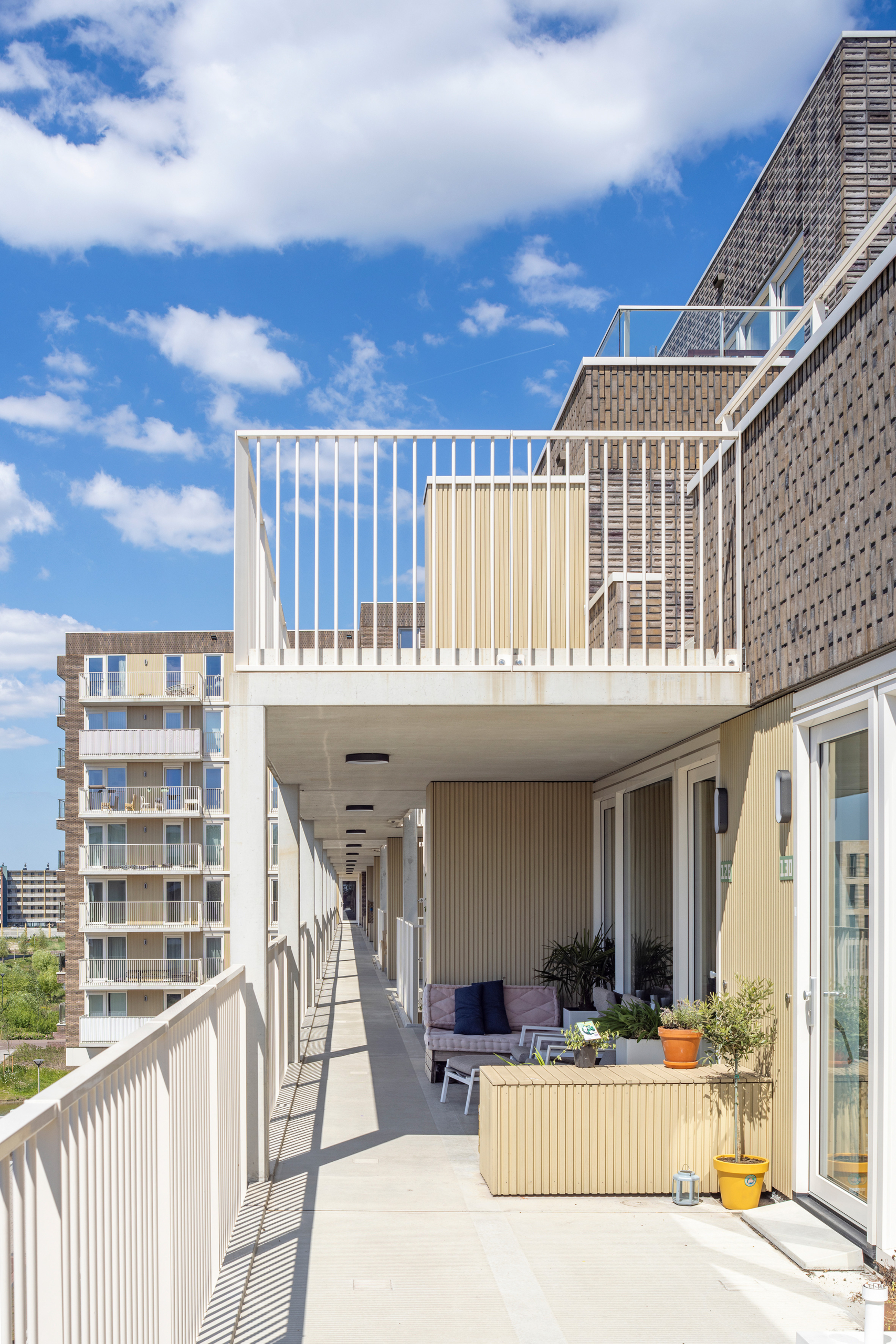
Entrance square as an architectural specialty They can use the three large swings and the sloping deck to the water.
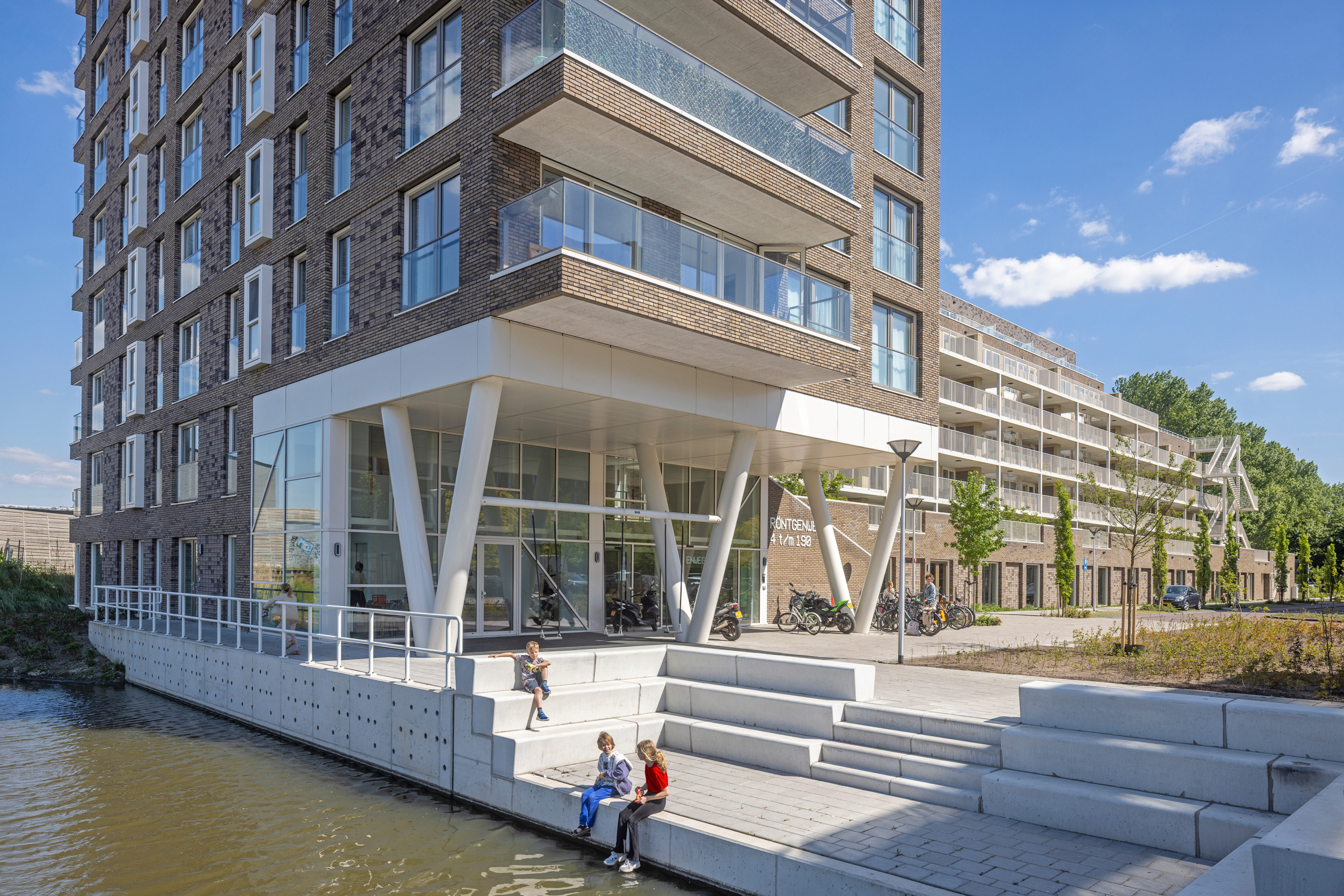
Attention to common areas
The design pays careful attention to collective spaces, such as a shared work space and a communal living room. This is used for children’s parties, for example, and is also often used as a workplace.
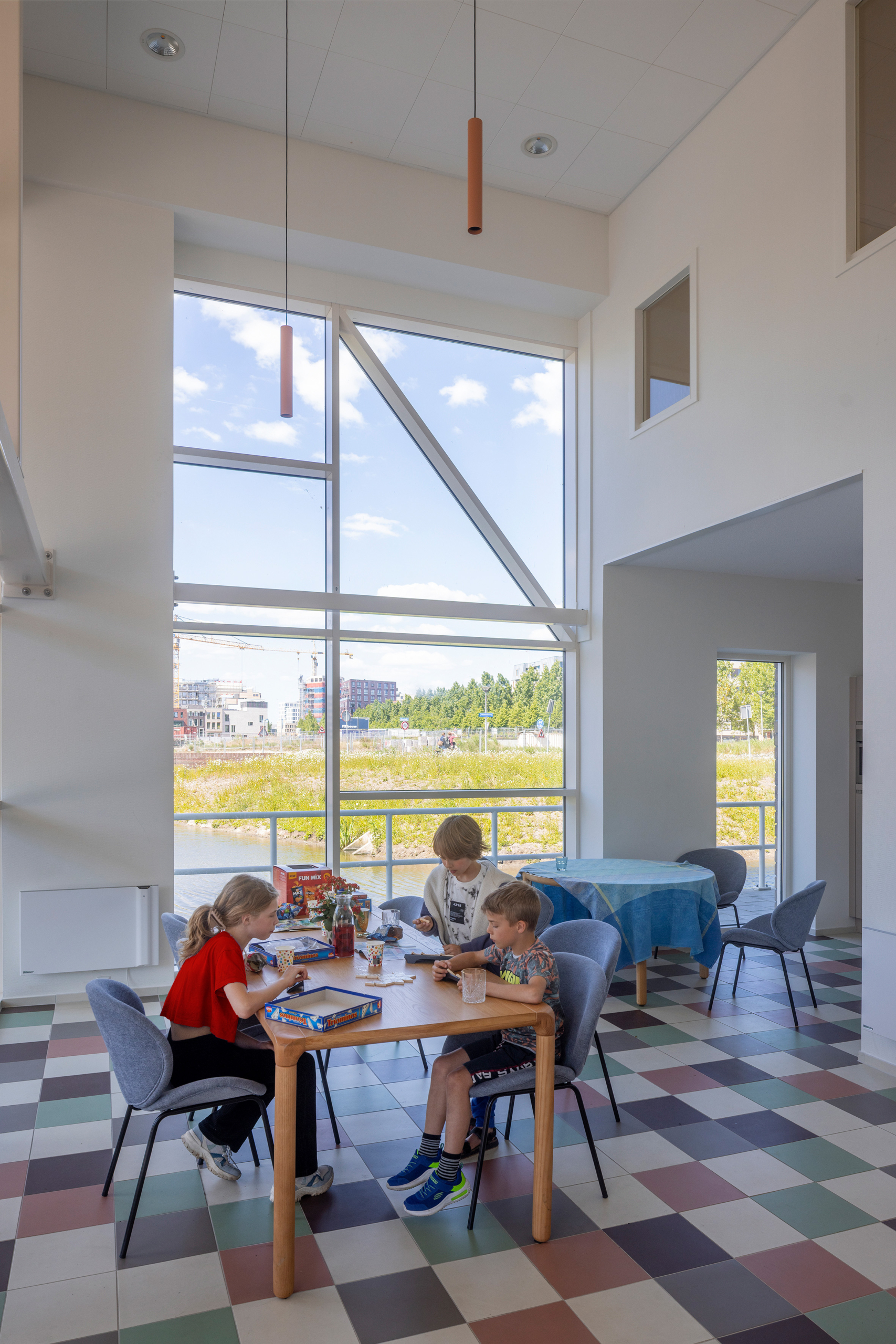
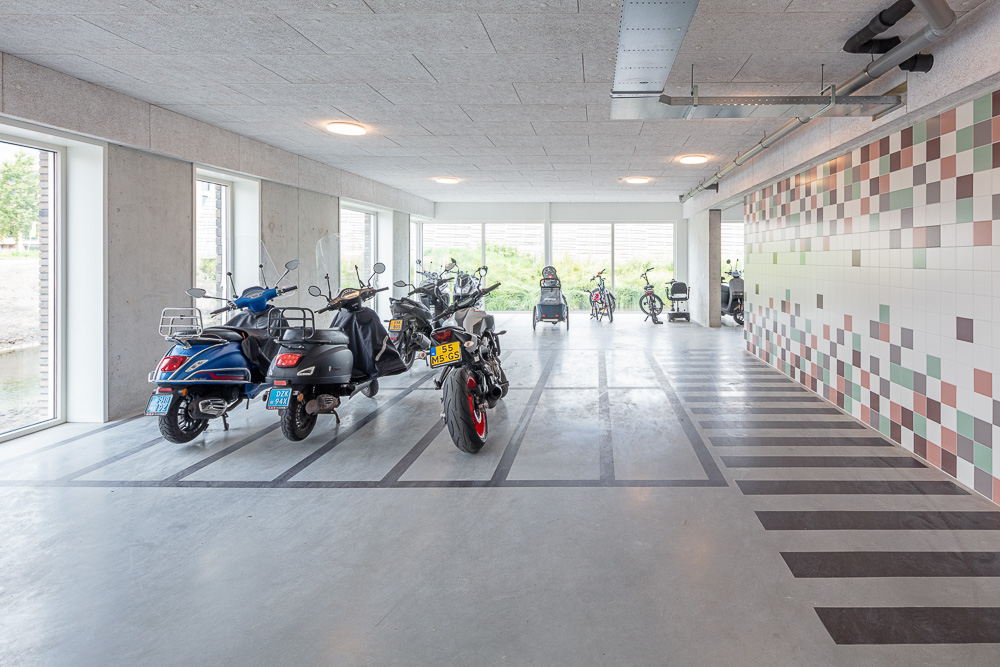
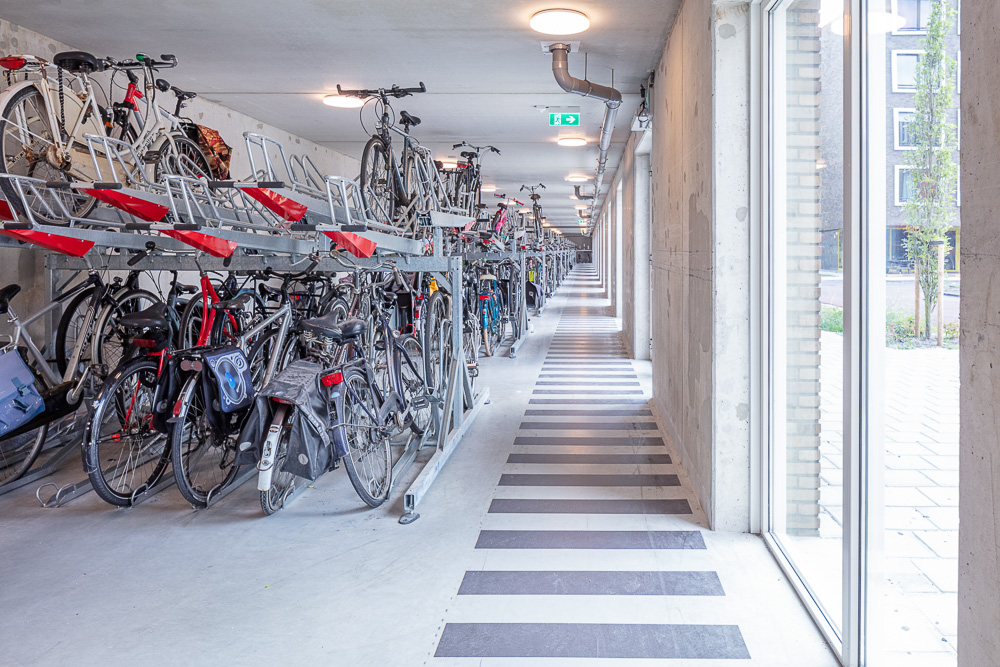
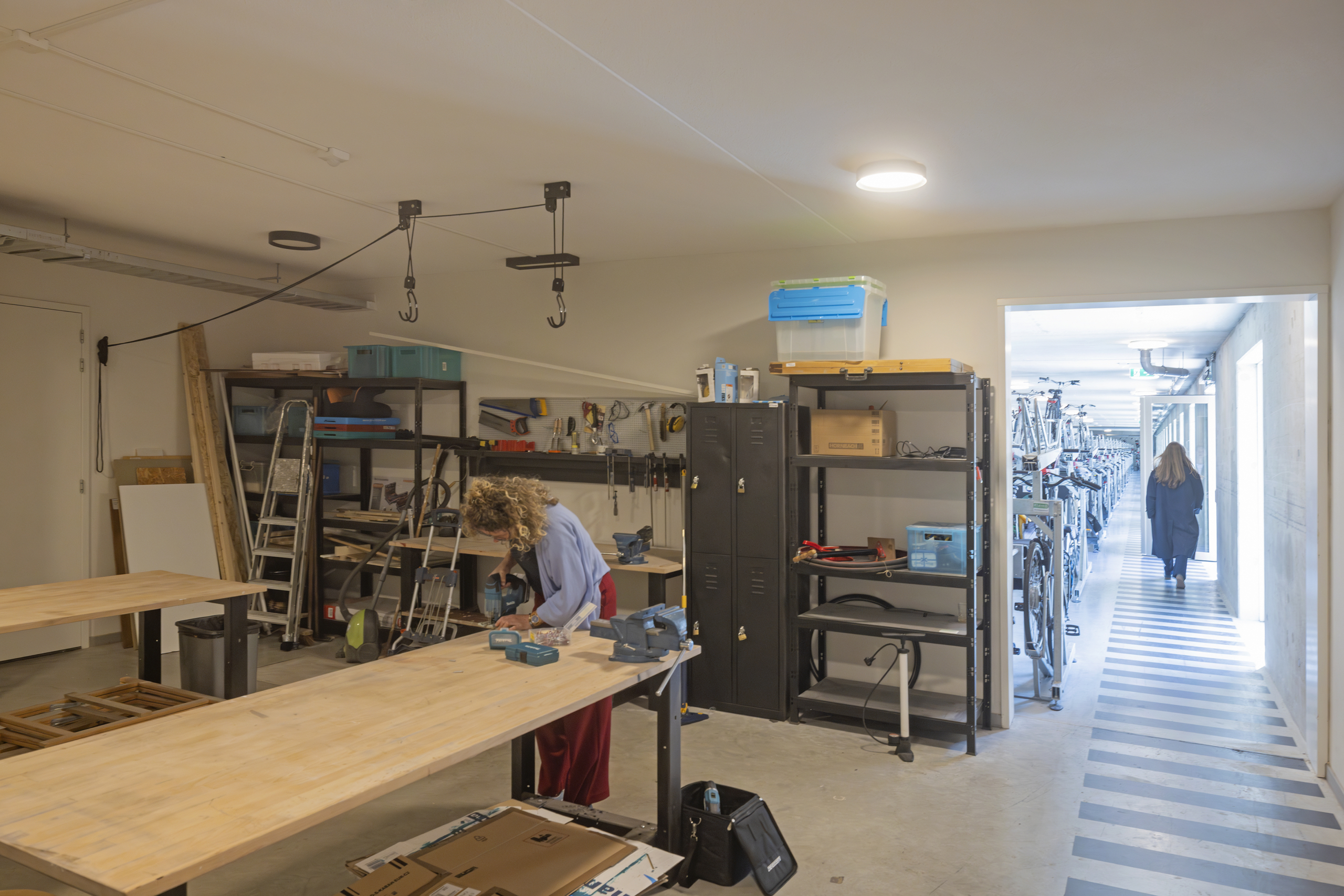
In major European cities such as Berlin, Copenhagen and Paris, it is common for families to live in a city apartment. In the Netherlands too, a development is visible where more and more families prefer to live in an urban residential environment with a high level of amenities. They prefer a living environment with a diversity of people and facilities over the tranquility of the suburbs. However, there are few suitable homes for this growing target group. The houses in the urban neighborhoods are relatively expensive and relatively small. The Family is designed to provide urban families with an ideal living environment. Soon it will be so obvious that we will wonder why it didn’t exist much earlier.

Related projects


